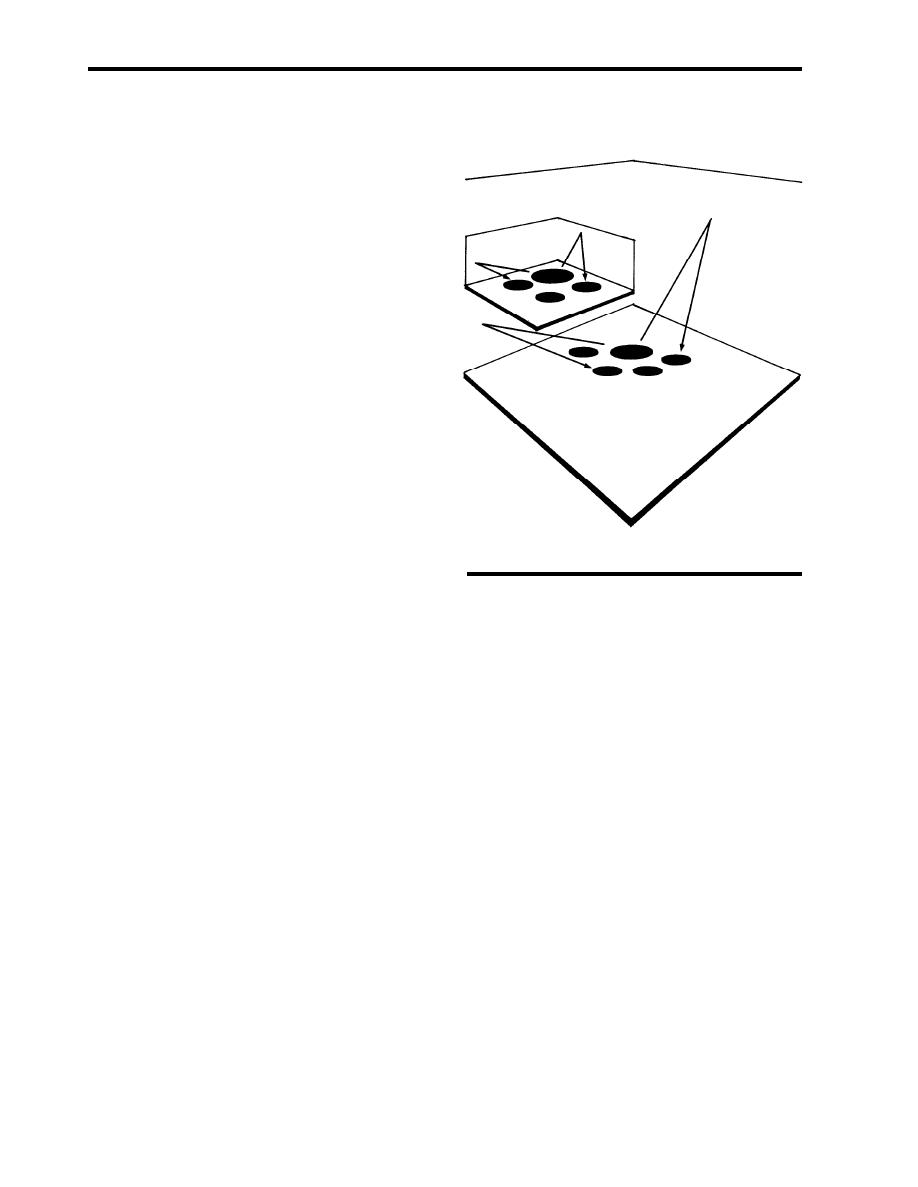
DG 1110.3.120
DESIGN GUIDE: MUSIC AND DRAMA CENTERS
JANUARY 1981
CHAPTER 3: MUSIC ROOM QUALITIES
frequencies relative to mid-frequencies.
"Warmth" refers to fullness of bass tones.
The reverberation time for mid-frequencies
is the primary reference for these qualities
and the measure of a Room's "liveness".
c. "Definition" and "clarity" describe how dis-
tinctly sequential and simultaneous sounds
are heard. It is a function of reverberation
time, direct/reverberant loudness, and blend.
d. "Balance") the perceived relationship among
sections of the orchestra, and "blend", the
harmonious mixing of instrumental voices,
are related to the disposition of the players
and design of the stage enclosure.
e. "Intimacy" or presence is what we hear in
a small Room. Our impression of a Room's
size is determined by the time interval be-
tween hearing direct sound and its first re-
flection. Moreover, the direct/reflected
loudness ratio must not be too small.
4. Musicians' Needs
Musicians are sensitive to the ability to hear
themselves. Two qualities are important: `en-
semble", ability to hear others and play in uni-
son, and "attack", the immediacy with which first
FIGURE 3-4.2 INTIMACY
reflections return to the musician, and by which
he may gauge the effects of his playing. Both are
functions of the stage enclosure and nearby por-
louder than this ambient level are annoying.
tions of the Room.
Acousticians have developed empirical stan-
dards called preferred noise criteria (PNC) curves
5. Absence of Aberration
for various listening activities.
Exaggeration or lack of any valued quality is an
aberration. The worst aberration is echo, a long-
External noise is to be eliminated. The construc-
delayed and sufficiently loud reflection that can
tion that retains sound energy in the Room gen-
be distinguished by the ear as a separate impulse.
erally excludes only air-borne noise. Sound can
be transmitted by structure as well as by air.
Geometric focussing intensifies echo. Since the
Hence, either the noise or the structure must be
size of a given surface can selectively reflect cer-
isolated.
tain wavelengths, particular frequencies may be
concentrated at a point resulting in the percep-
7. Fitness to Performance Type
tion of a sudden intense slap. Near-parallel sur-
Music types have varying properties and are in-
faces will produce a flutter echo.
tended to be heard in specific acoustic environ-
ments. A high degree of reverberant fullness is
Standing waves arise between parallel surfaces
important to romantic works, while contempo-
spaced a multiple of one-half a given wave-
rary and chamber music profit from definition.
length. A continuous tone will cancel itself at one
Small orchestras and soloists emit less energy
point and double at another.
and should be heard in small Rooms. The com-
position of a marching band is designed for field
6. Limiting of Noise
house and parade ground.
Noise can originate within the Room or outside
of it. Continuous noise generated within the
There is no average, all-purpose Music Room.
Room by the audience and mechanical system
It must be matched to the music intended to be
operation forms the reference baseline of per-
heard. If the Room does nothing to enhance the
ception and dynamic range. Intermittent noises
listening experience, a good electronic playback
3-17


 Previous Page
Previous Page
